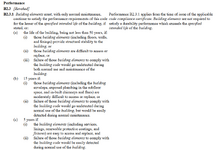Right or wrong doesn't really matter here, it all comes down to what leverage you have.
If it's on the plans, and you have a contract that says to follow the plans, you just withhold payment until the conditions are met. If you can find a code violation (this isn't one), and your contract says that they have to follow code, you can withhold payment. If you withhold payment for something that was not contractually specified, the builder can just put a lien on the property to get their money.
If you have a really vague contract they printed off the internet somewhere and those items are not specified, it doesn't matter what is right to do or good practice, you are just out of luck. The contractor will start ignoring your phone calls, and if you try to chase him he will simply change his LLC so you can't get any money if you sue him. Even good contractors have bad clients that they handle this way, and bad contractors are really good at it.
Very little moisture will be able to get up to the studs by wicking, and it will be able to dry out without causing damage because a contractor who does not seal his bottom plate is not going to air seal and super insulate enough to prevent the wood from drying. The studs are real wood, not chopped up and glued back together wood, so they wet and dry pretty well without rotting. We used to use real wood to build ships that we sailed all the way around the world in...
Just keep the rain and snow off and you will be fine.


